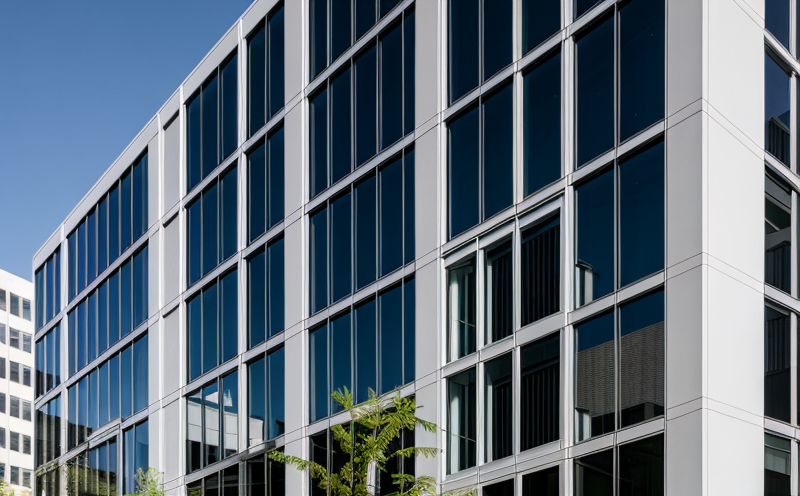ISO 10545 Water Absorption and Porosity Testing
The ISO 10545 standard is a globally recognized protocol used to determine the water absorption capacity and porosity of glass, ceramic, and façade materials. This testing method plays a crucial role in ensuring that these materials meet the required standards for durability and performance in various applications.
Water absorption is an important parameter because it directly impacts the material's resistance to moisture and its potential for deterioration over time. Porosity influences how effectively the material can withstand water penetration, which is critical for structural integrity and longevity. In building and infrastructure projects, these factors are essential for selecting materials that will perform optimally in diverse environmental conditions.
The testing process involves exposing a standardized specimen to controlled amounts of water under specific conditions. The specimen's mass before and after the exposure period is measured, allowing for the calculation of water absorption percentage. The porosity determination then follows using a series of tests that measure how much air can pass through the material under defined pressure.
This testing method ensures that building materials are suitable for their intended applications by providing data on their ability to resist moisture-related damage. This is particularly important in regions with high humidity or where the structure will be exposed to frequent water exposure. The results of ISO 10545 tests can influence decisions regarding material selection, design optimization, and construction quality assurance.
Accurate testing according to ISO 10545 helps compliance officers ensure that materials meet regulatory requirements and industry standards. Quality managers can use these test results to monitor the consistency of product performance over time and identify any discrepancies in raw material quality. R&D engineers benefit from this data as they refine formulations and manufacturing processes, while procurement teams can leverage it to source reliable suppliers.
The ISO 10545 standard is widely accepted across the globe, making it a valuable tool for international collaboration on construction projects. Compliance with these standards ensures that building materials are safe, durable, and environmentally friendly, contributing to sustainable construction practices.
Customer Impact and Satisfaction
Enhanced confidence in material performance: ISO 10545 testing provides data that supports the reliability of materials used in construction projects, leading to higher customer satisfaction with the final product.
Avoidance of costly repairs: By ensuring that materials meet the required standards for water absorption and porosity, ISO 10545 helps prevent premature failure of structures, reducing the need for costly maintenance or replacement.
Improved reputation for quality: Compliance with international standards like ISO 10545 enhances a company's reputation as a provider of high-quality materials, which can lead to repeat business and referrals.
Increased safety: Ensuring that materials are durable and capable of resisting moisture-related damage contributes to the overall safety and longevity of buildings.
These benefits translate into tangible advantages for customers, including reduced risk of failure, enhanced durability, and increased satisfaction with the quality of construction projects.
International Acceptance and Recognition
The ISO 10545 standard is recognized by many countries worldwide. It has been adopted in various standards such as ASTM C97/C97M-18, EN 12390, and others. This global acceptance ensures that testing results are universally applicable and comparable.
Adhering to the ISO 10545 standard demonstrates a commitment to quality and compliance with international standards. It is particularly important for companies operating in multiple countries or those involved in international collaborations.
Competitive Advantage and Market Impact
Companies that adopt ISO 10545 testing can gain several competitive advantages. By ensuring that their materials meet the highest standards, they can differentiate themselves from competitors by offering more reliable and durable products.
The use of this standard also helps in maintaining a consistent quality level across different production batches and locations, which is crucial for maintaining market reputation and customer trust. This consistency can lead to increased sales and better market positioning.





